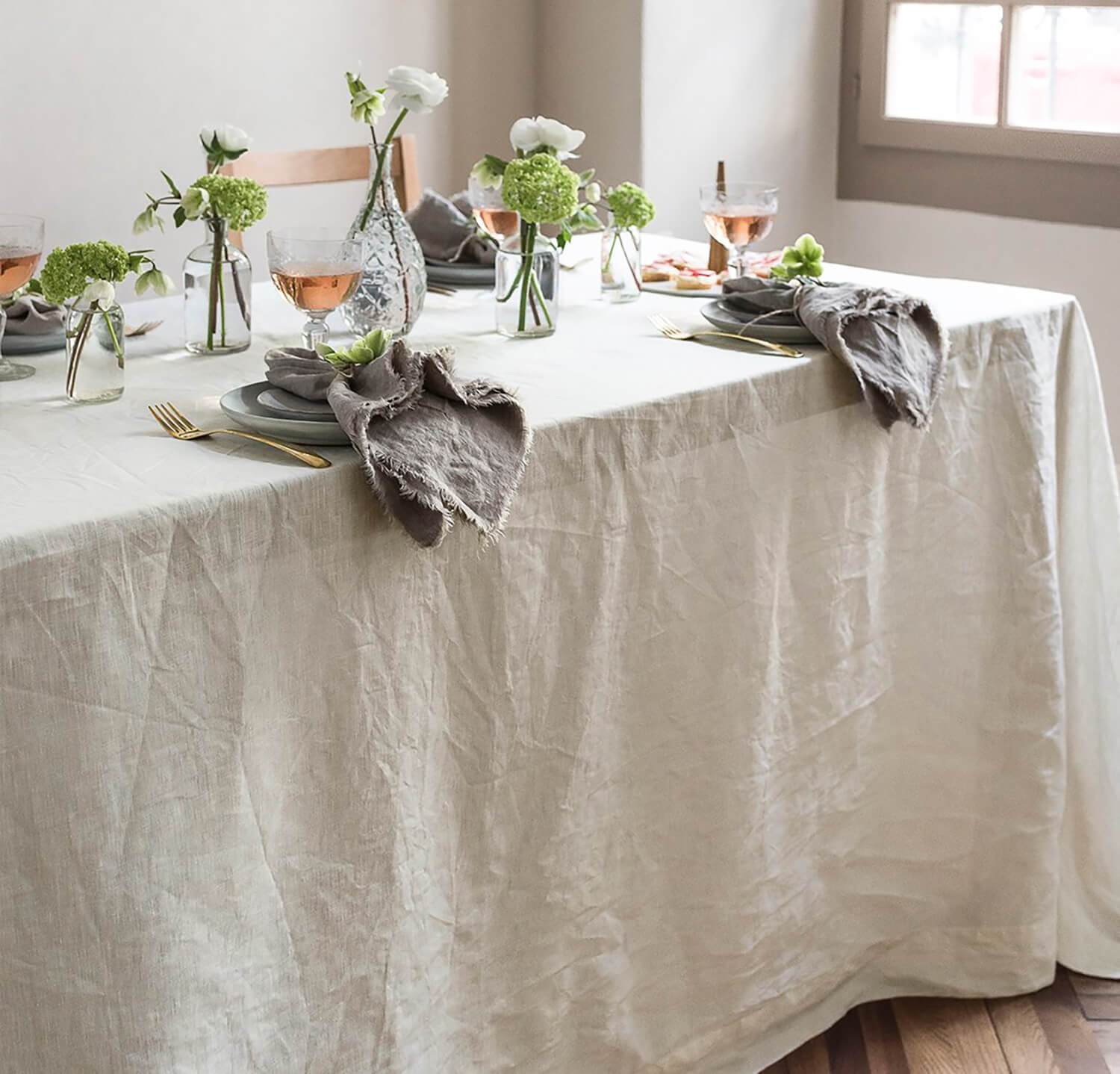Ultimate Guide to Flat Sheet Products: Discover the Best for Your Room
Ultimate Guide to Flat Sheet Products: Discover the Best for Your Room
Blog Article
Bed Linen Textile Developments: Checking Out Modern Trends and Creative Applications in Layout and Textile Sector
From lasting production methods to cutting-edge weaving technologies, the development of bed linen is improving the landscape of the textile sector. As we dive into the realms of imaginative style applications and the appearance of linen blends and crossbreed textiles, a brand-new chapter unfolds in which linen's function in future fabric technologies takes center phase.
Sustainable Practices in Linen Manufacturing
Sustainable techniques in linen production have actually ended up being significantly crucial in the textile industry's efforts to reduce ecological influence and promote ethical sourcing approaches. Linen, a natural fiber originated from the flax plant, uses a range of benefits such as breathability, toughness, and biodegradability. Nonetheless, traditional approaches of linen manufacturing can entail substantial water consumption, chemical usage, and energy-intensive procedures.
To address these challenges, many textile makers are adopting lasting practices throughout the linen production process. This consists of sourcing flax from natural farms that avoid dangerous chemicals and chemicals, applying water-efficient retting techniques to essence fibers from the flax stalks, and utilizing eco-friendly dyes and finishes. Additionally, some business are spending in renewable resource resources to power their production facilities and reducing waste via recycling and upcycling initiatives.
Technical Improvements in Bed Linen Weaving
With the expanding emphasis on sustainable techniques in linen manufacturing, the fabric market is currently seeing a rise in technological developments specifically intended at transforming the art of bed linen weaving. These developments are reshaping the way linen materials are created, using boosted performance, high quality, and imagination in weaving techniques.
Among the key technical developments in linen weaving is the assimilation of digital looms. These sophisticated looms are furnished with software that permits elaborate and complex styles to be woven with precision. By digitizing the weaving procedure, manufacturers can achieve greater uniformity and precision in their bed linen textiles.
Furthermore, improvements in thread spinning innovation have made it possible for the manufacturing of finer and more long lasting bed linen threads - table cloths. This leads to softer and smoother linen textiles that keep their quality also after multiple uses and washes
In addition, the development of eco-friendly dyeing processes and surfaces for bed linen textiles is acquiring traction. These sustainable techniques not just minimize the ecological impact but additionally accommodate the raising customer demand for fairly generated fabrics.
Creative Style Applications for Bed Linen
Cutting-edge imaginative techniques are increasingly forming the imaginative style applications for bed linen in the textile sector. Designers are pushing the limits of standard bed linen use, exploring its adaptability in different applications. One popular fad is the combination of bed linen in lasting fashion lines, where its environmentally friendly residential or commercial properties are highlighted. Bed linen's natural visual charm and ability to mix with various other textiles make it a favorite option for developing distinct garments and devices that deal with the eco aware customer.
Moreover, developers are try out linen in home decor, utilizing its durable and breathable nature to craft elegant furnishings such as drapes, bed linen, and upholstery. The structure and drape of bed linen bring a sense of elegance and comfort to indoor rooms, including a touch of beauty to modern-day homes.

Linen Blends and Crossbreed Fabrics

Hybrid fabrics, on the various other hand, take the idea of mixing a step better by incorporating added components such as metallic strings, recycled materials, or conductive fibers. These innovative textiles not just broaden the design opportunities however additionally introduce functional facets like conductivity, antimicrobial residential or commercial properties, or boosted resilience. Crossbreed textiles are significantly being used in numerous sectors, including fashion, interior flat sheet design, and technological fabrics, where the need for multifunctional materials is on the increase.
Linen's Duty in Future Fabric Innovations

In the world of future textile innovations, linen is anticipated to be a principal in the growth of advanced functional materials. Scientists and designers are checking out means to improve linen's intrinsic top qualities through technical developments, such as integrating wise textiles, nanotechnology, and performance surfaces. These technologies intend to boost bed linen's efficiency attributes, making it ideal for a wider series of applications, from activewear to safety clothes.
Moreover, the mix of linen with various other all-natural or artificial fibers opens up limitless possibilities for developing unique textiles with special buildings and capabilities. By leveraging linen's attributes and exploring innovative blends, the textile industry is poised to present interesting growths that deal with evolving consumer demands and sustainability needs.
Conclusion
In verdict, the exploration of sustainable practices, technical improvements, innovative style applications, linen blends, and its function in future textile advancements highlight the continual development of bed linen fabric in the contemporary layout and textile industry. With a concentrate on development and imagination, the convenience and environment-friendly nature of linen make it a beneficial product for suppliers and designers alike, leading the means for additional developments and improvements in the field of fabrics.
As we dive into the worlds of innovative layout applications and the development of linen blends and hybrid materials, a brand-new phase unravels in which linen's function in future fabric technologies takes center stage.
Exploring the fusion of linen with various other fabrics has actually led to the development of innovative blends and hybrid textiles in the modern textile industry. Bed linen blends offer a distinct mix of the features of bed linen with those of other fibers, resulting in materials that have enhanced properties such as raised resilience, enhanced draping, and decreased wrinkling.The advancement of linen blends and crossbreed materials has set the stage for Bed linen to play an essential role in driving future fabric technologies.In the world of future textile technologies, bed linen is anticipated to be a key player in the advancement of advanced functional textiles.
Report this page